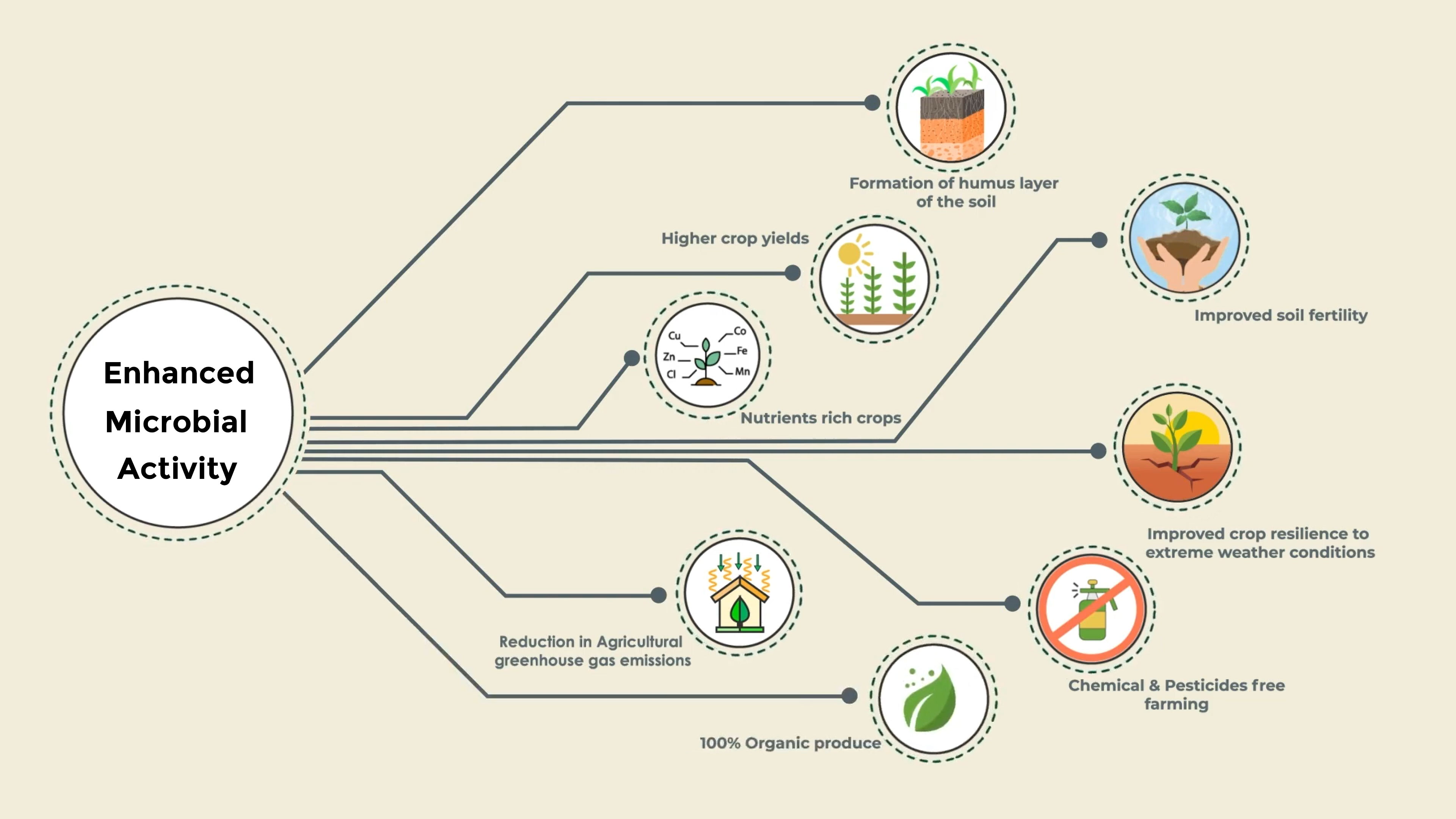
Soil microorganisms are indispensable allies in nourishing and protecting plants, ensuring their growth and resilience. Beyond their role in plant health, these tiny yet mighty organisms provide essential services that sustain soil fertility, purify air and maintain water quality—functions that are absolutely critical for human survival. By understanding the intricate connections between soil microbes and ecosystem health, we can make more informed and effective nutrient management decisions, paving the way for sustainable agriculture and a healthier planet.
One of the most fascinating observations is how plants actively shape their soil environment. Through their roots, plants release significant amounts of carbon into the surrounding soil, creating a biological hotspot known as the rhizosphere. This carbon-rich zone fuels a surge in microbial activity, attracting billions of microorganisms to the area around the roots.
Root exudates—composed of amino acids, organic acids, sugars and phenolics—serve as a food source for these microbes. Additionally, root mucilage, a gel-like layer surrounding the root tip, provides a rich mix of sugars, proteins and enzymes that further support microbial life. Remarkably, some plants transfer up to one-third to one-half of the carbon they capture through photosynthesis directly into the soil via their roots.
As roots release soluble carbon, they stimulate microbial growth, leading to a thriving community of microorganisms in the rhizosphere.
Soil microorganisms have a crucial role in controlling the transformations of plant nutrients in soil. While nitrogen (N), phosphorus (P) and sulfur (S) are abundant in soils, they are often in forms that plants cannot use directly. Microbes act as intermediaries, transforming these nutrients into soluble, inorganic forms that plants can absorb, ensuring healthy growth and productivity.
Soil microorganisms are like nature’s tiny workers, breaking down organic matter and minerals into soluble nutrients that plant roots can absorb as food. They convert nitrogen (N), phosphorus (P) and sulfur (S) from organic matter into forms plants can use. They also release potassium (K), calcium (Ca), magnesium (Mg) and micronutrients like iron (Fe), zinc (Zn), copper (Cu), manganese (Mn), boron (B), molybdenum (Mo) and chlorine (Cl) by dissolving minerals through the secretion of enzymes, acids and other compounds. For example, fungi and bacteria produce organic acids or special molecules like siderophores that make these nutrients available to plant roots. Without these microbes, many nutrients would remain locked in the soil and plants wouldn’t get the nourishment they need to grow. In short, microbes keep the soil healthy and help plants thrive.
Mycorrhizal fungi form symbiotic relationships with the roots of plants, playing a critical role in nutrient acquisition and plant health. These fungi are highly specialized with different types adapted to specific plant species. For example, ectomycorrhizal fungi primarily associate with woody plants, arbuscular mycorrhizal fungi (AMF) partner with a wide range of crop plants and ericoid mycorrhizal fungi are adapted to specific plant families.
Among these, arbuscular mycorrhizal fungi (AMF) are particularly remarkable. They penetrate plant root cells and extend their hair-thin strands, called hyphae, into the surrounding soil. This network acts as an extension of the plant’s root system, reaching into soil pores that are too small for roots to access. As a result, mycorrhizal fungi enhance the plant’s ability to absorb water and nutrients, even in older parts of the root system where uptake efficiency might otherwise decline.
In exchange for carbon provided by the plant, mycorrhizal fungi significantly boost the supply of essential nutrients such as copper (Cu), iron (Fe), nitrogen (N), phosphorus (P) and zinc (Zn). Their ability to improve phosphorus uptake is especially valuable for crops with high phosphorus demands or for plants growing in soils with limited soluble phosphorus. Mycorrhizal fungi achieve this by releasing enzymes that break down organic phosphorus and by extracting soluble phosphorus from the soil at concentrations far lower than what plant roots can access on their own.
By enhancing nutrient recovery and improving plant resilience, mycorrhizal fungi are indispensable allies in sustainable agriculture and ecosystem health.
One of the often-overlooked yet critical contributions of soil microorganisms is their ability to enhance soil structure. A well-structured soil—characterized by stable aggregates and good porosity—promotes healthier root growth, improves water infiltration and allows plants to extract nutrients more efficiently. By binding soil particles together and creating a porous environment, microbes ensure that roots can thrive and access the resources they need for optimal growth.
Soil microbes play a crucial role in soil aggregation by binding individual soil particles into stable clusters. This process is driven by the release of various organic compounds, particularly polysaccharides secreted by soil bacteria. Additionally, glomalin, a protein produced by mycorrhizal fungi, acts as a natural glue that strengthens soil structure. The fine, thread-like hyphae of mycorrhizal fungi further enhance soil aggregation by binding small particles together, creating a more stable and porous soil matrix.
Greater soil aggregation leads to improved porosity, better aeration and increased water-holding capacity—all of which support healthier root development and enhance nutrient uptake. By fostering a well-structured soil environment, soil microorganisms contribute to long-term soil fertility and sustainable plant growth.
Soil microbes play a crucial role in controlling pathogens by acting as a natural defense system for plants. They outcompete harmful pathogens for space and nutrients, preventing infections before they start. Many beneficial microbes produce natural antibiotics that inhibit or kill disease-causing organisms, reducing the need for chemical pesticides. Additionally, they stimulate a plant’s immune system through Induced Systemic Resistance (ISR), making plants more resilient to diseases and environmental stresses. By forming protective biofilms around roots, microbes shield plants from pathogens while also improving soil structure, nutrient availability and water retention. Some microbes even break down the cell walls of harmful fungi and bacteria, preventing their spread. Ultimately, a well-balanced microbial population fosters healthier soil and stronger plants, ensuring better resistance to diseases and reducing dependency on synthetic inputs. Bio.SoilZ enhances this natural process by reactivating dormant soil microbes, restoring soil health and promoting sustainable agriculture.